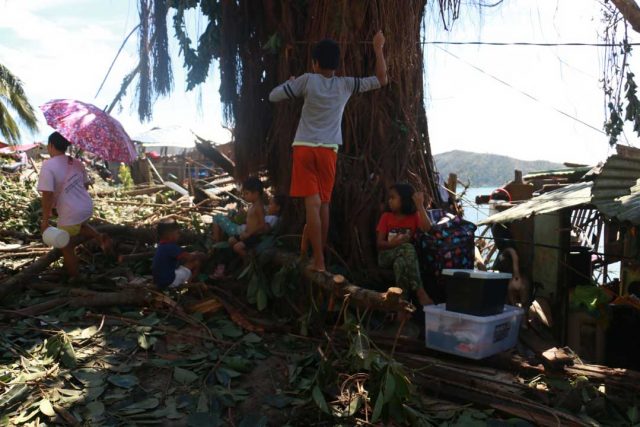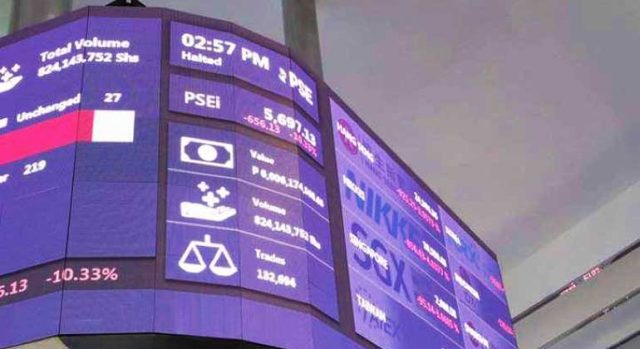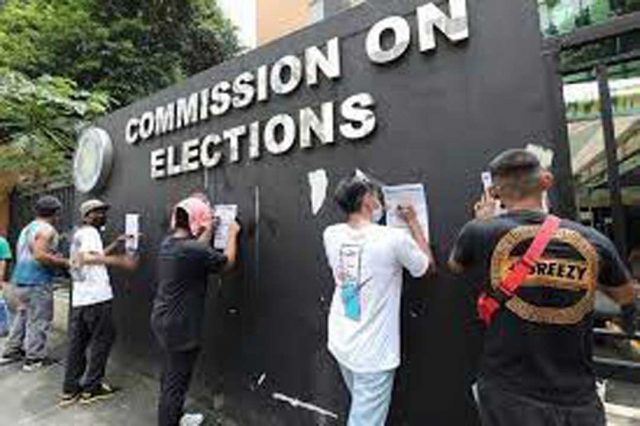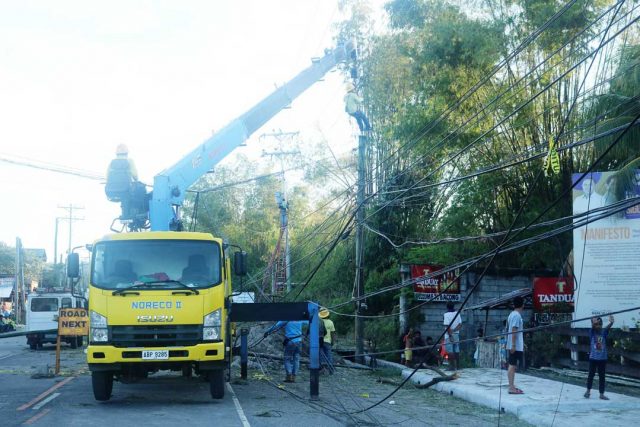Peso weakens vs dollar on balance of payment deficit
THE PESO depreciated versus the greenback on Tuesday as the country’s balance of payment (BoP) posted a deficit.
The local unit closed at P49.95 per dollar on Tuesday, shedding two centavos from its P49.93 close on Monday, based on data from the Bankers Association of the Philippines.
The peso opened Tuesday’s session at P49.88 a dollar. Its weakest showing was at P49.965, while its intraday best was at P49.875.
Dollars exchanged increased to $916 million on Tuesday from $887.35 million on Monday.
A trader said the peso weakened versus the dollar following the BoP data released by the Bangko Sentral ng Pilipinas (BSP).
The BoP posted a $123-million deficit, a reversal of the $1.473-billion surfeit seen in November 2020, the BSP said on Monday evening. It was the smallest deficit in eight months or since the $73 million logged in March.
The peso also weakened due to concerns on the Omicron variant cases that have surged in some economies, including European nations, Rizal Commercial Banking Corp. Chief Economist Michael L. Ricafort said in a Viber mes-sage.
British Prime Minister Boris Johnson said on Monday he would impose tighter restrictions to slow the spread of the Omicron variant if needed, according to Reuters.
Based on data from the Johns Hopkins University of Medicine, the UK tallied 92,598 new cases on Monday.
For Wednesday, Mr. Ricafort gave a forecast range of P49.82 to P49.99, while the trader expects the local unit to move within P49.90 to P50.10. — Luz Wendy Noble with Reuters
Shares dip on US growth outlook, typhoon setback
PHILIPPINE stocks declined on Tuesday as investors retreated to the sidelines amid weak US economic growth outlook for next year and the expected economic setback from the damage caused by Typhoon Odette.
The bellwether Philippine Stocks Exchange index (PSEi) on Tuesday slid 70.55 points or 0.97% on Tuesday to close at 7,167.06, while the broader all shares index dropped by 22.71 points or 0.59% to 3,805.67.
“Local market negatively reacted to the weaker US gross domestic product (GDP) growth outlook in 2022 amid Omicron spread and threat of the so-called ‘policy-induced’ US growth slowdown given recent US Federal Reserve policy hawkish pivot,” First Metro Investment Corp. Head of Research Cristina S. Ulang said in a Viber message.
“US growth outlook has historically influenced Philippine GDP growth outlook and equity market outcomes,” Ms. Ulang added.
The annualized rate of gross domestic product growth was expected to drop to 4% in the first quarter of 2022 from an expected 6% in the final three months of this year, according to a Reuters poll of economists published on Dec. 8.
Growth for all of 2022 was seen decelerating to 3.9% — still well above pre-pandemic trends — from 5.6% this year, Reuters reported.
“Investors also priced in the local economic setbacks caused by Typhoon Odette in Tuesday’s session,” Philstocks Financial, Inc. Senior Research Analyst Japhet Louis O. Tantiangco said in a Viber message.
The National Disaster Risk Reduction and Management Council said in an initial report on Monday that Typhoon Odette caused at least P118 million in damage to agriculture and P225 million in damage to infrastruc-ture.
The Department of Public Works and Highways estimated damage to national roads, bridges, and flood-control structures at P448.9 million as of 12 noon on Tuesday.
At the stock market, all sectoral indices tumbled on Tuesday.
Financials decreased 25.24 points or 1.54% to 1,604.54; services declined 17.40 points or 0.87% to 1,980.07; property contracted 27.03 points or 0.84% to 3,176.51; industrials plunged 75.46 points or 0.73% to 10,192.98; hold-ing firms lost 47.61 points or 0.67% to 7,004.34; and mining and oil went down 4.79 points or 0.05% to 8,999.16.
Value turnover inched up to P6.86 billion on Tuesday with 955.83 million shares switching hands from the P6.70 billion on Monday with 1.09 billion shares traded.
Decliners beat advancers, 106 against 75, while 56 names closed unchanged.
Foreign net selling rose on Monday with P372.02 million in net outflows from the P237.48 million recorded the previous trading day.
Regina Capital Development Corp. Head of Sales Luis A. Limlingan pegged the resistance at 7,300, and support at 7,120. — M.C. Lucenio
Supplies running low for survivors of typhoon

PHILIPPINE officials and residents of areas that bore the brunt of typhoon Rai, locally named Odette, pleaded for food, water, and shelter on Tuesday as damaged roads, flooding, and severed power and communication lines hampered relief efforts.
Rai struck last Thursday, the strongest typhoon to hit the archipelago this year, killing nearly 400 people and affecting 1.8 million, displacing 630,000 of them, according to the United Nations Office for the Coordination of Humanitarian Affairs.
“Our food supply is running low. Maybe, in a few days, we will totally run out,” said Fely Pedrablanca, mayor of Tubajon town on Dinagat Island.
The area, facing the Pacific Ocean, was devastated by the typhoon and she said only nine out of more than 2,000 homes in her town were left standing.
The coast guard has deployed vessels to help in relief work and in trying to reach areas still cut-off, including Dinagat.
In the province of Southern Leyte, evacuation centers were also destroyed, said Roger Mercado, acting chief of the public works agency, as he appealed for tents and construction material.
Damage to infrastructure in Southern Leyte, where residents were also in desperate need of food and water, could reach P3 billion, Mr. Mercado told DZMM radio.
“The damage is very extensive similar to Yolanda,” Mr. Mercado said referring to typhoon Haiyan, one of the most powerful tropical cyclones ever recorded, which killed 6,300 people in the Philippines in Dec. 2013.
At least 375 people were killed and 56 are missing. More than 500 were injured, police said on Tuesday.
“The government prepositioned food and non-food items but they are not enough because many are in need,” Danilo Atienza, Southern Leyte’s disaster chief, told Reuters.
President Rodrigo R. Duterte has ordered state agencies to immediately restore power and communication services.
Mr. Duterte has vowed to raise P10 billion for the rehabilitation and recovery of typhoon-hit areas, his spokesman said on Tuesday.
Finance Secretary Carlos G. Dominguez III said a $500-million World Bank disaster response loan can be tapped to help fund rehabilitation efforts as soon as the country announces a state of national calamity.
Quoting Defense Secretary Delfin N. Lorenzana, he said the National Disaster Risk Reduction and Management Council has recommended to the President the declaration of a state of calamity in response to the typhoon, which brought heavy rains and destructive winds over central and southern Philippines.
“World Bank has been put on notice,” Mr. Dominguez said in a Viber message to reporters on Monday.
“(The) amount to be drawn will be determined as soon as the respective agencies provide the figures to the Department of Budget and Management/Department of Finance and approved by the Office of the President.”
FOREIGN ASSISTANCE
Foreign aid has also started to arrive, while the United Nations said it was working with partners to help in the areas of shelter, health, food, protection and other life-saving responses.
The Japanese government said that relief goods are on their way to the Philippines, including generators, camping tents, sleeping pads, portable water containers and plastic sheets that could serve as temporary roofing.
“My heart and prayers go out to everyone in large parts of Visayas and Mindanao hit by Typhoon Odette. My deepest respect to the brave first responders of the ongoing disaster relief and recovery operations in the area. I hope for everyone’s safety,” Japanese Ambassador to the Philippines Koshikawa Kazuhiko said in a tweet.
Chinese Ambassador Huang Xilian said in a Facebook post that relief goods are now being sent to areas devastated by the typhoon. “China will do its utmost to continue its firm support to disaster relief efforts to the Philippine government and the Filipino people.”
China will be distributing 20,000 food packages worth P8 million and 4.72 million kilograms of rice in cooperation with the Department of Social Welfare and Development and local Filipino-Chinese communities.
The United States will also be providing emergency shelter assistance to 3,000 families. Its embassy said in a tweet that 10,000 family food packs are on the way to Butuan City for distribution.
United Kingdom Minister for Asia Amanda Milling said in a tweet that they have committed £750,000 (P49.4 million) to the Philippine Red Cross to support its relief operations.
Canadian Prime Minister Justin Trudeau said in a tweet that financial assistance will be provided, also through the Philippine Red Cross, to “help address immediate needs on the ground, such as water and sanitation.”
Several local government units across the country that were not affected by the typhoon as well as private groups and corporations have also been mobilizing relief efforts.
Among the Philippine companies that have been delivering assistance include the Aboitiz group, San Miguel Corp., Jollibee Foods Corp., and McDonald’s.
Meanwhile, Senate President Vicente C. Sotto III urged the Palace to order a price freeze on basic commodities in worst-hit areas.
“The government should work fast to stop unscrupulous business owners from taking advantage of the calamity and raising the prices of basic commodities amid a shortage in food and water supplies,” he said in a statement on Tuesday. — Reuters, Alyssa Nicole O. Tan, and Jenina P. Ibañez
Philippines reports another record low in COVID cases at 168
THE HEALTH department reported 168 coronavirus infections on Tuesday, the lowest one-day tally since May 22 last year when 163 cases were recorded, although 20 laboratories failed to submit data in the aftermath of typhoon Rai, locally known as Odette.
Four laboratories did not operate on Dec. 19.
The Philippines now has a total 2.84 million coronavirus disease 2019 (COVID-19) cases.
The death toll hit 50,794 after 10 more patients died, while recoveries increased by 372 to 2.78 million, the Department of Health (DoH) said in a bulletin.
There were 9,384 active cases, 508 of which did not show symptoms, 3,289 were mild, 3,406 were moderate, 1,804 were severe and 377 were critical.
The agency said 95% of the reported cases occurred from Dec. 8 to 21. The top regions with cases in the past two weeks were Metro Manila with 47, Calabarzon with 27, and Western Visayas with 16.
It added that 60% of the reported deaths occurred in December, 20% in November, 10% in August, and 10% in May.
DoH said 179 cases had been removed from the tally, which were reclassified as recoveries, while six cases previously tagged as recoveries were relisted as deaths.
The agency said 22% of intensive care units in the Philippines were occupied, while the rate for Metro Manila was 21%.
Meanwhile, inoculation activities are continuing and the DoH said on Tuesday that it has reached half of its seven-million target under the second round of the national vaccination drive against COVID-19.
The Bayanihan, Bakunahan 2 program was originally set on Dec. 15 to 17, but areas in the path of typhoon Odette moved their schedule to Dec. 20 to 22.
From Dec. 15 to 20, there were 3.76 million jabs administered, Health Undersecretary Myrna C. Cabotaje said in a news briefing on Tuesday.
Of these, about 2.1 million were for second dose, 1.1 million first dose, and 289,000 booster shots.
About 10 million jabs are still needed before the government hits its 54 million target by the end of the year.
Ms. Cabotaje said they are still optimistic that the goal will be reached despite challenges in carrying on with the vaccinations in typhoon-hit areas.
We have increased the vaccination target for areas that are currently able to vaccinate, she said, and lowered the number for those struggling due to the typhoon.
CHILD IMMUNIZATION
The DoH also announced that it has stepped-up its programs to increase the coverage rate of fully-immunized children.
Government data show immunization coverage in 2020 among infants and children was 3.9% lower than in 2019 as many parents were hesitant to bring their children to health centers for fear of exposing them to COVID-19.
“DOH is committed to protecting every child against vaccine-preventable diseases,” Beverly Lorraine Ho, director of the DoH-Health Promotion Bureau, said in a statement.
She said they are coordinating with the National Vaccine Operations Center to dedicate days to catch up with immunization activities for children. — Alyssa Nicole O. Tan
Preliminary conference for 3 Marcos disqualification cases set Jan. 7
THREE petitions seeking the disqualification of Ferdinand R. Marcos, Jr., son and namesake of the late Philippine dictator, from running for president in the May 2022 elections have been set for preliminary conference on Jan. 7.
Commission on Elections (Comelec) Commissioner Rowena V. Guanzon, who is part of the division handling the three cases, made the announcement in a Twitter post on Tuesday.
She said in a separate Facebook post that the summons have been sent to Mr. Marcos, who has five days from receiving these to file a response.
Ms. Guanzon also said that people should not blame the Comelec for the delay in the proceedings because one petitioner has not given a copy of their petition to respondent Marcos.
The Comelec was aiming to have the cases resolved within December.
The three cases were filed by Bonifacio Ilagan, Abubakar Mangelen, and progressive group Akbayan.
“The Akbayan petition looks better than others,” Ms. Guanzon said.
There are seven cases filed against Mr. Marcos, including four for disqualification, two for cancellation, and one to declare him as a nuisance candidate, which has already been junked by the Comelec.
Most of the remaining petitions cite that Mr. Marcos is not qualified to run for president as he has been convicted for tax evasion, a crime that permanently bars the perpetrator from public office. — Jaspearl Emerald G. Tan
Robredo to push for underground power, communication lines following typhoon Odette’s impact
VICE-PRESIDENT Maria Leonor “Leni” G. Robredo, who is running for the country’s top post in next year’s elections, said on Tuesday that her infrastructure development agenda will include a push for setting up underground power and communication lines, which are more costly to install than overhead facilities.
“One realization from the series of very strong typhoons which hit our country is that our next priority infrastructure development agenda should be putting electric and communication lines underground, particularly in typhoon-prone areas,” Ms. Robredo said in a Facebook post.
If elected president in 2022, she said her government will aim to ensure “every affected area’s resilience even after a destructive typhoon such as Odette (international name: Rai).”
She said underground lines would be more cost-effective since there will no longer be additional spending to restore toppled down posts.
“We have, on average, 20 typhoons a year. It would be better to spend now and make them underground instead of repeatedly spending whenever a post falls down,” she added in a mix of English and Filipino.
She also said that cut-off power and communication lines add to the burden during disaster situations. — Alyssa Nicole O. Tan
Supreme Court issues restraining order vs Comelec in favor of senior citizen’s party-list
THE PHILIPPINE Supreme Court on Tuesday issued a temporary restraining order (TRO) against the Commission on Elections (Comelec) after it disqualified a senior citizen party-list group from participating in the May 2022 national and local elections.
The Ang Tinig ng Senior Citizens sa Filipinas, Inc., also known as Ang Tinig ng Seniors, filed the petition before the High Court through its president Rogelio D. Evasco after their registration as a party-list group was dismissed by the poll body and later denied for reconsideration.
The Supreme Court, in its TRO order dated Dec. 17 under the authority of Chief Justice Alexander G. Gesmundo, deemed the party’s petition “sufficient in form and substance.”
The Comelec was also ordered to submit its comment to the court within a non-extendable period of 10 days from notice.
The High Court earlier issued similar rulings in favor of the groups Igorot Warriors International, Inc., and Alliance for Resilience, Sustainability and Empowerment. — Alyssa Nicole O. Tan
Human-centered approach to work
(Last of a series)
Let me end this series of articles on the “Human-Centered Approach to Work” by reflecting on the content of a recently published book by Jamie Merisotis, president and CEO of Lumina Foundation, entitled Human Work in the Age of Smart Machines. He wrote that in this time of upheaval and social unrest, with increasing threats to global health (consider the COVID-19 pandemic), democratic institutions (consider the rise of totalitarian or authoritarian governments), and the world’s economies, we must rise to the challenge of workers being transformed — and often rendered obsolete — by automation and artificial intelligence. We must be able to work alongside smart machines, doing that which only humans can: thinking critically, reasoning ethically, interacting interpersonally, and serving others with empathy.
The main theme of this book brought me back to the time I was graduating from De La Salle High School on Taft Avenue and was deciding what course to take in college. Having decided to continue my education at the same college (La Salle was not yet a university), I considered the undergraduate offerings then of my alma mater. There were the usual majors in business, such as accounting and business administration, as well as the offerings in the college of engineering such as chemical, mechanical and civil engineering. Fortunately, two towering figures in the liberal arts — Dr. Ariston Estrada and Dr. Waldo Perfecto — convinced a small group of high school graduates in 1954 to enroll in a newly crafted college curriculum called Liberal Arts-Commerce (LIA-COM) that combined a strong humanities program with a specialization in one of the fields of management, such as accounting, marketing, or finance. It was supposed to be a five-year program (as compared to the four-year purely commerce specialization). By overloading subjects over four years of the program, I was able to finish the course ahead of time. I never regretted making that decision of taking the LIA-COM. I am now ready for the new occupations of human work enumerated by Jamie Merisotis in his book under the chapter “The Work Only Humans Can Do.”
According to Merisotis, there are four kinds of occupations that are emerging that embody human work — the work of the future. The first category is that of “Helpers.” These are the people in occupations involving deep personal interaction with other people. Since the service sector accounts for a larger component of GDP in developed economies, these jobs are proliferating, as many industries have transformed to become focused on customers. The most notable example is in the financial services (I am glad I never considered myself an accountant even if I majored in accounting in the “COM” portion of LIA-COM). As technology (especially automation) has taken over most of the repetitive tasks that professionals such as bankers and accountants used to do, their jobs have become focused on understanding client needs and responding to them. As retail banking has become the key driver of profits in that industry, recognition of the importance of customer service has become widespread. One survey found the top investment priority of banking executives, even in emerging markets like the Philippines, was to enhance customer service, with implementing new technology far behind. The same survey also reported that bank executives view talent as the primary constraint they face in pursuing their customer-centric business model.
The second category of human work that is emerging can be referred to as “Bridgers.” Workers in these occupations interact with others, perform technical tasks, and help run systems. Bridgers literally create connections — to other people, and to other forms of work. Sales managers, automotive repair managers, and many supervisors fall into this category. The vast field of Information Technology contains many of these jobs. No longer is an IT professional a “computer geek.” He must be a “bridger,” combining technical expertise with strong people skills such as communication and empathy in order to be effective. I see these qualities in the IT personnel in my own university. They have a deep understanding of the nature of each of the various disciplines of the component schools of our University (e.g., management, economics, political science, education, engineering, etc.) so that they can effectively cater to the needs for IT services of these schools and their respective professors. The term “bridgers” is truly appropriate for the type of work they do.
The third category has been labeled “Integrators.” These people are in occupations that integrate knowledge and skills from a range of fields and apply them in a highly personal way. Examples given are social workers and elementary school teachers. Social workers have to keep constantly abreast of knowledge in fields as diverse as psychology, economics, medicine, and nutrition. In addition, they must also understand the implications of emerging research and be able to integrate it into their practices. In fact, they themselves are field researchers— testing new approaches, innovating, and constantly seeking new ways to better meet the needs of their clients. All of their work is done within a social, cultural, and economic context, and under constraints of laws and regulations that also are constantly changing.
Finally, the fourth category comprises the “Creators.” These are people who possess highly technical skills and pure creativity. Many of these occupations involve the creative use of technology. For example, computer gaming is now a $135-billion global industry, and it is growing at the rate of 11% per year. Just the sales of one game — Red Dead Redemption II — totaled $725 million in its first three days off the market. Video game development employs more than 220,000 people in the United States, at an average salary of $97,000 annually. A study commissioned by the BPO-IT Industry Association of the Philippines identifies computer gaming as one of the knowledge-intensive industries that Filipino young people can excel in as AI and robotization increasingly make contact center agents redundant.
Reflecting on these insights from Mr. Merisotis’ book, I have the following recommendations to the human resource strategy that we have to follow in the coming years as we try to be at the forefront of Industrial Revolution 4.0, even if we have not completed the first three stages of the industrial revolution that started in England during the last decades of the 18th century. The very first thing we have to do in order to prepare Filipino workers for the age of smart machines is to increase the public budget we spend on education from the low of 3% prevailing to 6% which is the average among our peers in the Southeast Asian region. This larger amount should be mostly invested in improving the quality of public education so that our elementary and secondary school pupils can improve their performances in international tests in reading comprehension, arithmetic, and science. To attain this goal, we must increase significantly the salaries of our elementary school teachers who are “integrators” and must be able to teach many subjects to their pupils, being versatile enough to go from arithmetic to science to history to geography to social sciences, etc., etc., especially in the more remote areas of the country where there is a shortage of teaching personnel. The elementary school teacher should be a jack of all trades and a master of as many disciplines that are taught to students at the basic education level.
We must also pay handsomely teachers at the senior high level (Grades 11 and 12) because they are the ones who should make sure that a graduate of senior high school is already steeped in critical thinking, effective communication, inter-personal skills, and multi-disciplinary analysis by having been exposed to the liberal arts and the humanities. It must recalled that what we should offer in the last two years of high school in the K to 12 curriculum now in force are the academic subjects that used to be taught in the first two years of college when basic education was delivered in 10 years. We have to upgrade the quality of basic education to the extent that everyone who has completed the two years of senior high school must already have been exposed to the Great Books, philosophy, history, arts, and sciences: in a word, the liberal arts which prepare every person to live a fully human existence, independently of his specialization which he needs to earn a living.
If we are able to introduce these reforms in our educational system, we will prepare our present and future generations for what is truly human work that can never be replaced by machines. As Mr. Merisotis wrote in his book: “Human work doesn’t fit into the neat categories of the industrial age. Rather than mastering a single body of knowledge or set of technical skills, to do human work, people must develop a wide range of abilities and apply them to solving complex problems in dynamic settings… if a job can be defined by a single body of knowledge, no matter how arcane, or a single set of skills, no matter how specialized, there is a high likelihood artificial intelligence can do it.”
I am glad that I took the LIA-COM program instead of just specializing in accounting. I am sure that a robot will never make me redundant!
BERNARDO M. VILLEGAS has a Ph.D. in Economics from Harvard, is professor emeritus at the University of Asia and the Pacific, and a visiting professor at the IESE Business School in Barcelona, Spain. He was a member of the 1986 Constitutional Commission.
bernardo.villegas@uap.asia
Lacson wants juvenile justice law revised to include parents’ accountability
PARENTS SHOULD be held partly accountable for crimes committed by juvenile delinquents, Senator Panfilo M. Lacson, Sr. said as he proposed a review of the law on justice for young offenders.
“I think a shared responsibility must be administered to the parents,” said Mr. Lacson, Sr., who is running for president in the May 2022 elections.
He said parents must also face penalties if proven beyond reasonable doubt that there was negligence which contributed to the criminal behavior of the child.
“After all, while they are still minors, they are under the custody of their parents, who raise and shape the minds of the children,” said Mr. Lacson, a former national police chief.
He said Republic Act No. 9344, the Juvenile Justice and Welfare Act of 2006, “already went through what we call the test of time and there were issues, problems encountered.”
It must be revisited to address some of its defects, he said. — Alyssa Nicole O. Tan
A strategic national agenda to move forward
The May 2022 national elections are revealing themselves to be a political quagmire. The outcome and aftermath will have deep impact on every Filipino.
Realities on the ground present sobering and multi-faceted challenges for the next administration. These challenges must be met accordingly with responsive reforms to raise the country from the current economic doldrums towards recovery.
Early into the pandemic, the Stratbase ADR Institute endeavored to continually monitor the risks of the pandemic. After 21 months and on to the pre-election period, Stratbase also commissioned 12 special studies that provided analyses and recommended strategic policy reforms based on sound data. These studies delved deep into the issues on health, education, inequality, digitalization, climate action, national security, and democratic governance.
Addressing corruption is top of mind. As the health-cum-economic crisis persists, corruption corrodes our democratic way of life and institutions and every strand of our social fabric. The resulting hardships are aggravated by fragmented healthcare and social protection systems and the government’s ineffectual pandemic management.
In his study, Dr. Francisco Magno said that “democratic backsliding and weak governance contributed to the country’s poor pandemic performance. The declining percentile rank of the Philippines in the WGI (World Governance Indicators) can be arrested through improvements in controlling corruption, voice and accountability, government effectiveness, regulatory quality, rule of law, and political stability.”
It is thus “important that the pursuit of reforms and innovation are anchored on building strong institutions for citizen deliberation, participation, and oversight in the exercise of authority and the disbursement of public resources,” he said.
Key to the health challenge is a people-centered healthcare system. According to Magdalena A. Barcelon, M.D., Katharina Anne D. Berza, and Eleanor A. Jara, M.D., this system includes “shifts in policy direction and structural changes taking into consideration resource distribution, and people’s participation in health-related decision making at the national and community level.”
These social, political, and economic factors have all the more raised the urgency of addressing inequality and have compounded generational disparities and existing social cleavages. Dr. Ronald Mendoza said, “For these reasons, the challenge of our generation is no longer simply about reducing poverty. Reducing inequality is the key to political stability, crisis resilience and sustained economic development.”
Digital transformation and e-commerce, which the pandemic accelerated, demonstrates another challenge and opportunity as another pillar of economic recovery. In this sense, digital transformation, readiness, and infrastructure need to be prioritized in response to the digital divide or lack of access to digital services.
According to Dr. Sherwin Ona, “In times of crisis, people expect their government and its institutions to provide clarity of direction, stability, and hope. This means that future national leaders must be cognizant of its potentials and dangers of digitalization to be able to navigate its complexity and provide a clear path for a resilient Philippines.”
The rise of the digital economy, in turn, has brought the issue of bringing the consumer economy of the country to a new level. The digital landscape is the new arena in dealing with trade, investments, and supply chain issues, where the Philippines must find its niche in the global supply chains. This is where the role of the private sector becomes crucial. Moving forward, the situation necessitates a shift to investment-driven growth anchored on the principles of stakeholder capitalism.
In regional and international affairs, the growing global democratic convergence provides legitimacy to the promotion of multilateralism and rules-based order. The involvement of the international community in the Indo-Pacific amid China’s expansionist agenda in the West Philippine Sea has thus far been a deterrent against any escalation given the brewing tensions between littoral states, China, and international actors.
Richard Heydarian said that “as a US treaty ally, and a strategic partner of key regional powers such as Australia and Japan, the Philippines should leverage these new regional alignments to uphold its sovereign rights and defend its territorial integrity.” Further, he emphasized that the next administration should “respond to China’s strategic opportunism and leverage the broader shifts in geopolitical alignments in the Indo-Pacific.”
For Dr. Rene de Castro, “the key challenge for the 17th Philippine president is to transform the current administration’s unplanned and makeshift policy of limited hard balancing into a well-thought, comprehensive, and formal grand strategy that will guide the Philippines in the next six years.”
In a non-traditional security (NTS) outlook, Dr. Mely Caballero-Anthony observed that NTS is “Non-military in nature, they include climate change, pandemics, environmental degradation, and resource scarcity threatening food and energy security.” For Toby Melissa C. Monsod, Sara Jane Ahmed, and Golda P. Hilario, the Philippine contribution to the Paris Agreement should be strengthened where climate change adaptation and resilience serves as the anchor and sustainable development as the context.
Climate change poses a direct threat to livelihoods and human capital, as recently demonstrated anew by the devastation caused by typhoon Rai/Odette in the Visayas and Mindanao areas. Climate action, together with the other challenges mentioned, necessitates a multi-sectoral or a holistic collaboration among governmental and nongovernmental actors.
These evidence-based policy recommendations are a comprehensive set of developmental solutions of top thought leaders and movers from the country’s academe, private industries, civil society, and government. The objective is to help the next administration with a strategic national agenda that will be responsive to the daunting challenges towards recovery.
This coming election, we must choose leaders that have the competence, track record and who are deserving of our trust to lead us out of these hard times.
Victor Andres “Dindo” C. Manhit is the president of the Stratbase ADR Institute.
Solon appeals for generators for typhoon-affected Cebu residents
A PARTY-LIST representative appealed for power generators to areas in Cebu where electricity supply has yet to be restored following the onslaught of typhoon Odette, with international name Rai, on Dec. 16.
The people in Cebu are struggling because they do not have electricity, water, and telecommunication signal, Ako’y Pilipino party-list Rep. Ronnie L. Ong said after an aerial survey and visit of the province.
He also noted that some gas stations in affected areas were taking advantage of the situation by selling overpriced fuel.
“They charged P100 to P200 per liter,” Mr. Ong said in Filipino.
The coastal towns were the hardest hit, he said.
Mr. Ong also said some vaccines against the coronavirus were wasted in typhoon-struck areas as there was not enough fuel to sustain the operation of storage facilities.
On Monday, the Health department reported that 100 vials of Pfizer vaccines were wasted in the Western Visayas region, which does not cover Cebu.
“The National Vaccines Operations Cluster shall replenish (the) stocks of Region 6 in the future,” Health Undersecretary Maria Rosario S. Vergeire told reporters via Zoom.
She added that teams were still assessing the condition of other vaccines and storage facilities in areas with reported blackouts due to the typhoon. — Jaspearl Emerald G. Tan












